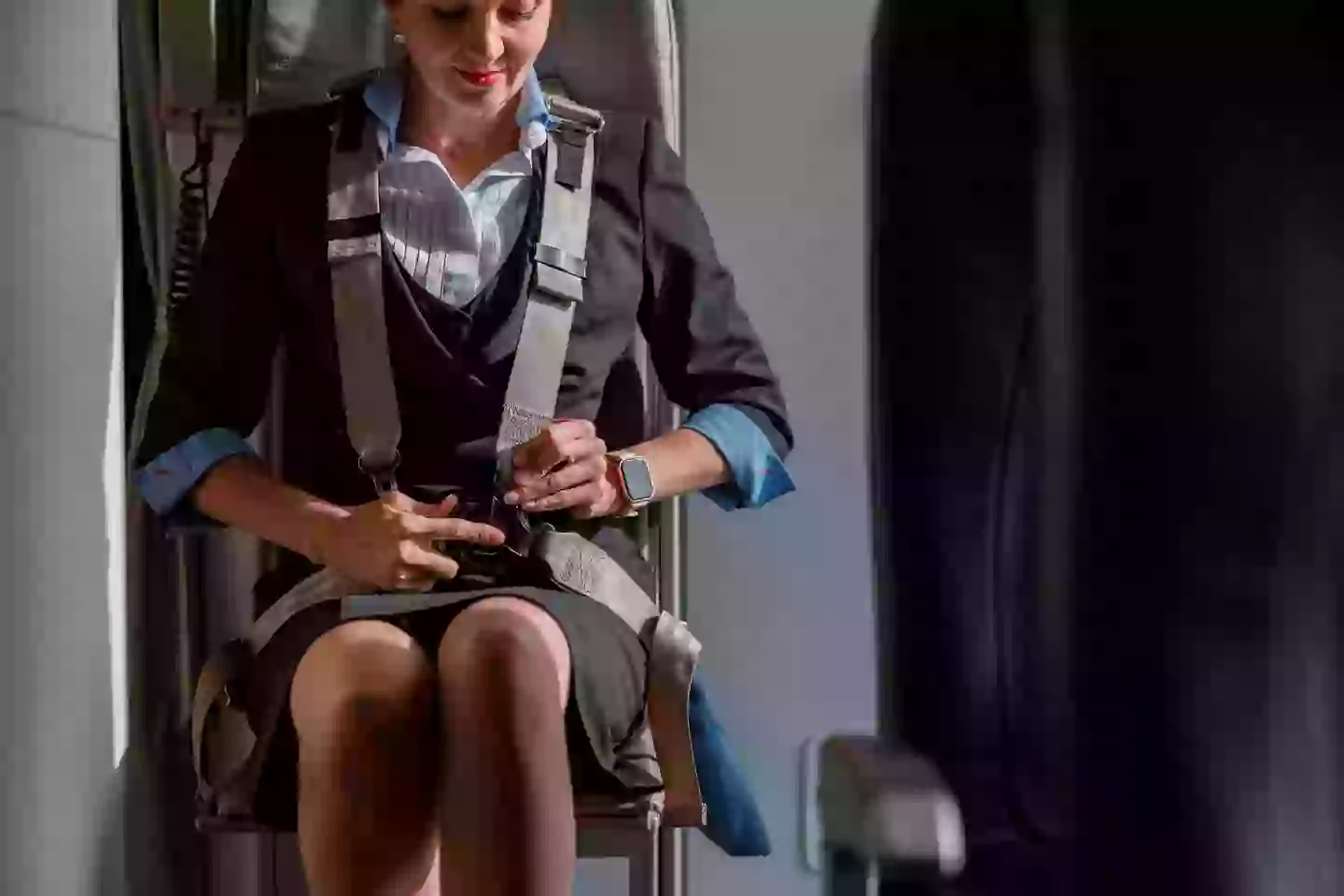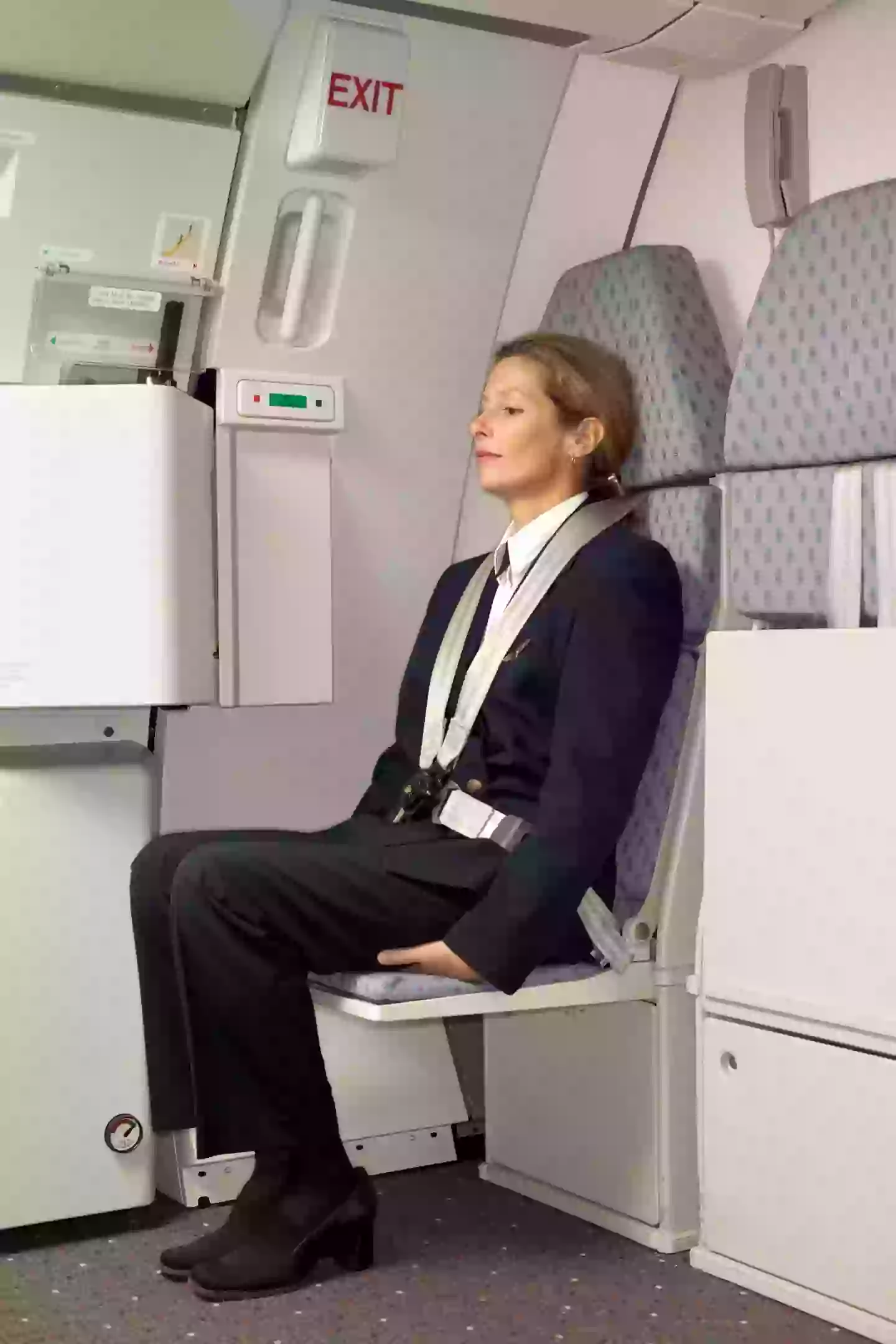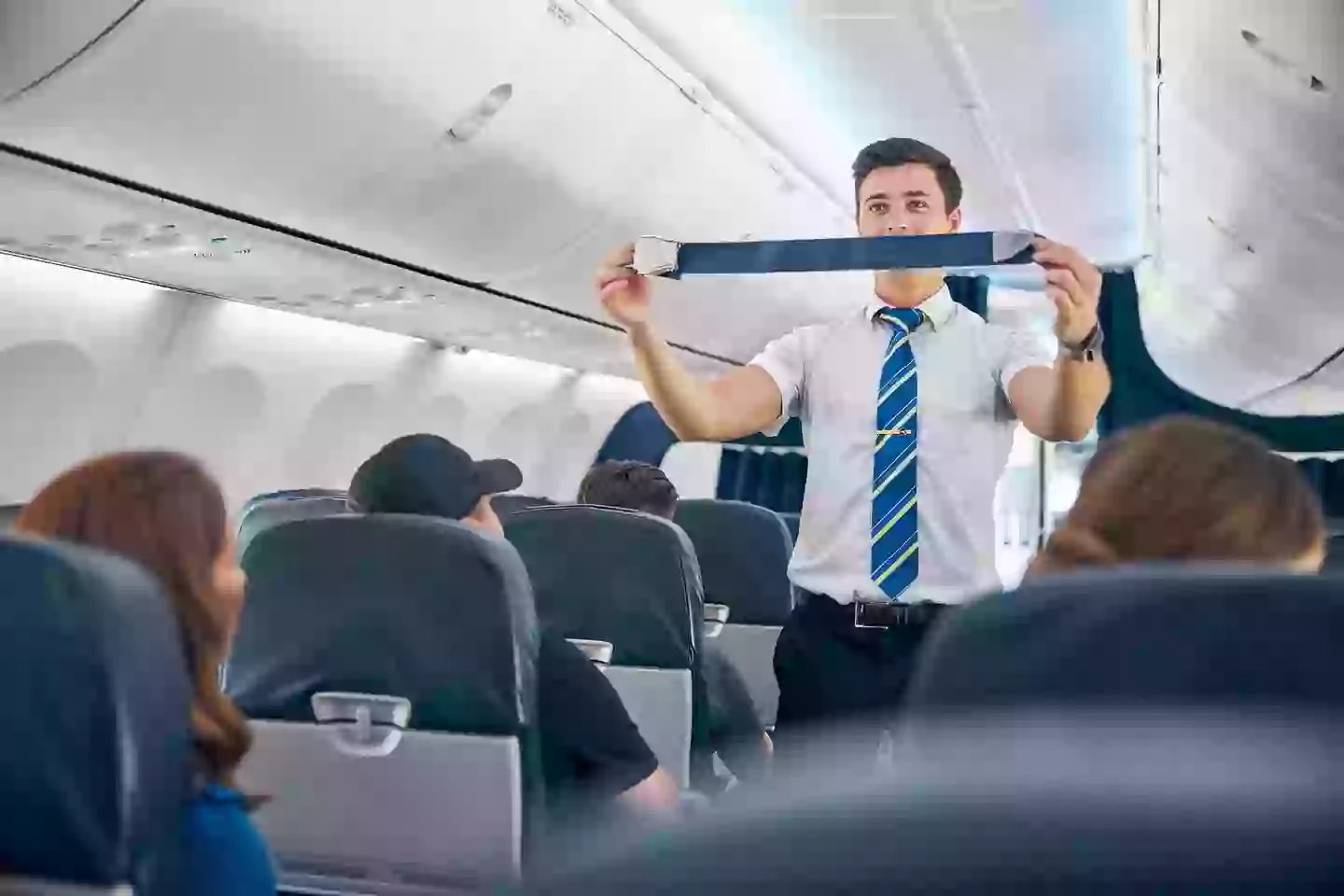If you’ve ever noticed flight attendants sitting on their hands during takeoff and landing, it’s not just to keep warm—it actually serves a critical safety purpose.
Frequent flyers may have observed that once flight attendants buckle up, they often place their hands under their thighs. This position isn’t just a habit or nervous tic—it’s a trained practice recommended for specific reasons.
So why do they do it? The answer lies in emergency preparedness. Sitting on their hands helps cabin crew maintain a brace position, ensuring they can react instantly in case of an emergency. By keeping their hands in place, they can prevent involuntary movements or injuries during sudden impacts and be ready to assist passengers immediately if needed.
Next time you’re on a flight, you’ll know—this simple posture is actually a crucial part of aviation safety.

Cabin crew have to sit in a certain position for taxi, takeoff and landing (Getty Stock)
Cabin crew are advised to sit in the brace position during take off, which includes sitting on your hands.
According to Henny Lim, a flight attendant for Cebu Pacific in the Philippines, this involves: fastening your seatbelt securely; sitting upright; sitting on your hands (palms up); having your arms loose and putting your feet flat on the floor.
“The aim is to keep the body in a rigid pose, so that if there was any impact from an unplanned emergency, the body is damaged less,” Lim explained further, as per PEOPLE.
“This keeps body movement restricted so that there is less chance of injury if there was an impact.”

Crew are typically advised to sit on their hands as part of a brace position (Getty Stock)
Another flight attendant called Anusha Pratima echoed similar sentiments on a Quora thread.
She said: “While we are seated on the jumpseat during taxing, take off, approach and landing, the crew must always be alert for any dangerous situations that may occur during the flight. Hence the importance of brace positions. Brace positions restrict the movement of your limbs and spine which allows lesser damage to the body upon impact.”
However, Anusha did note that some guidelines have changed over the years and it’s now advised that cabin crew sit with their hands on their laps instead.

Flight attendants have to ensure their own safety, as well as passengers’ (Getty Stock)
She did also admit that she personally prefers to sit on her hands though because it keeps them warm.
“It’s always freezing and I need to warm my hands,” Anusha said.
You might have noticed that the brace position passengers are advised to take in the case of an emergency is different.
It bares some similarities to the position flight attendants have to take, but, according to Simple Flying, passengers should ‘bend the upper torso well forward and place your head against the backrest of the seat in front’ instead of sitting up straight like cabin crew.
People are also told to ‘place hands flat to the left and right beside the head against the seat in front’.


